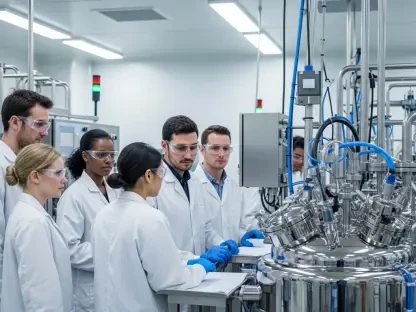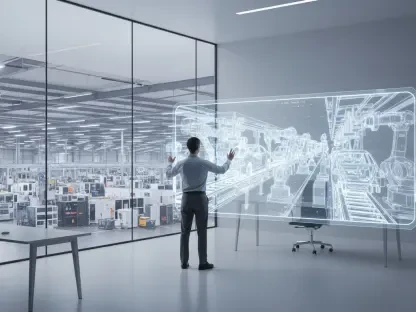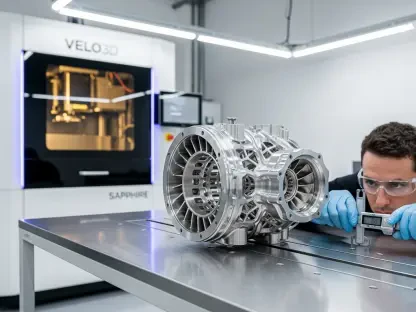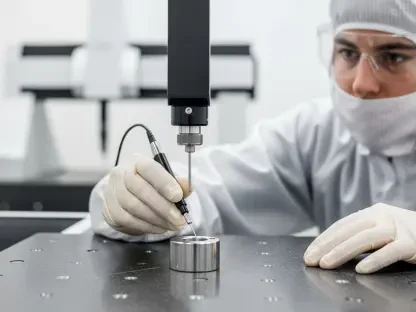The manufacturing and distribution (M&D) industry is currently experiencing a significant transformation driven by technological advancements, an evolving workforce, and global market dynamics. These changes present both opportunities and challenges, such as declining revenues, skilled labor shortages, high interest rates, and uncertain tax policies. To navigate this complex environment, M&D companies must prioritize optimizing efficiency through modern strategies.
Embracing Flexibility
Adapting to Market Demands
Flexibility in production levels is essential for responding efficiently to fluctuations in demand. This demand-driven approach involves adjusting production based on real-time market conditions to minimize waste and reduce costs. Traditional demand forecasting methods, such as historical data analysis and market research, are now enhanced by advanced technologies like artificial intelligence (AI) and predictive analytics.
AI and predictive analytics enable more precise forecasting by analyzing vast datasets and identifying patterns. These modern tools allow manufacturers to make informed decisions about production volumes, ensuring they can swiftly respond to market demands and optimize efficiency. This dynamic approach not only enhances efficiency but also reduces the risks associated with overproduction or underproduction, as adjustments can be made in real-time based on accurate, up-to-the-minute data.
Leveraging Advanced Technologies
The incorporation of AI and predictive analytics into demand forecasting has been transformative for the M&D industry. By leveraging these advanced technologies, companies can go beyond traditional methods to anticipate market trends and consumer behavior with remarkable precision. The capabilities of these tools extend to analyzing historical data, identifying patterns, and predicting future demands, thereby reducing uncertainties and facilitating more accurate production planning.
Additionally, AI and predictive analytics can optimize inventory management, ensuring that raw materials and finished products are available when needed without excessive stockpiling. This contributes to a lean manufacturing process, where resources are utilized efficiently, and waste is minimized. By embracing these technologies, M&D companies can achieve greater agility and responsiveness, positioning themselves to meet customer demands promptly and cost-effectively.
Enhancing Supply Chain Management
Diversifying Suppliers
Effective supply chain management is critical for ensuring that materials are available as needed and production continues smoothly. The COVID-19 pandemic highlighted the risks of relying on a single supplier, which can lead to disruptions. Diversifying suppliers helps avoid dependency on a single source and enhances resilience. By sourcing from multiple suppliers, companies mitigate the risks of supply chain interruptions caused by unforeseen events affecting a single supplier.
Diversifying the supplier base also allows companies to take advantage of competitive pricing, improved quality, and innovative products from different suppliers. This strategy not only strengthens the supply chain but also fosters healthy relationships with a broader network of suppliers. By establishing a diverse and robust supplier base, M&D companies can ensure continuous production, maintain quality standards, and remain competitive in the face of market uncertainties and disruptions.
Investing in Real-Time Visibility
Investments in real-time supply chain visibility further enhance operational efficiency. Accurate demand forecasting, diversification of suppliers, and the creation of contingency plans are vital strategies for robust supply chain management. Real-time visibility allows companies to monitor the movement of materials and products throughout the supply chain, providing up-to-date information on inventory levels, delivery statuses, and potential bottlenecks.
With real-time data, companies can proactively address issues before they escalate, ensuring smooth operations and timely deliveries. This capability is particularly crucial in an industry where timely access to materials directly impacts production schedules. By leveraging technologies like blockchain, the Internet of Things (IoT), and advanced analytics, M&D companies can maintain transparency and control over their supply chains, enhancing their ability to respond to emerging challenges and capitalize on opportunities.
Implementing Automation
Increasing Productivity
Automation is a powerful tool for increasing productivity and minimizing errors. Automated systems excel in performing repetitive tasks with precision and consistency, significantly reducing manual errors and boosting output. Tasks like assembly, packaging, and quality control benefit greatly from automation, as these processes require high precision and can be time-consuming when performed manually.
Furthermore, automation enables M&D companies to operate around the clock, maximizing productivity and efficiency. By implementing automated systems, companies can achieve higher throughput and reduce the likelihood of defects, leading to improved product quality and customer satisfaction. Automation also frees up human workers to focus on more complex and creative tasks, enhancing overall workforce efficiency and job satisfaction.
Evaluating Costs and Benefits
While automation facilitates around-the-clock operation, maximizing productivity, it does come with challenges. The high initial investment costs and potential tax implications must be carefully evaluated against the long-term benefits. Manufacturers need to assess these factors to make informed decisions about automation implementation. Considerations include the return on investment (ROI), the potential for cost savings over time, and the impact on employment and workforce dynamics.
Despite the initial costs, the long-term benefits of automation can be substantial. Reduced labor costs, increased production capacity, and enhanced quality control contribute to overall operational efficiency and competitiveness. Additionally, automated systems can quickly adapt to changing production requirements, providing the flexibility needed to meet market demands. A well-planned and strategically executed automation initiative can position M&D companies for sustained growth and success in a rapidly evolving industry landscape.
Overarching Trends and Consensus
Adapting to Technological Advancements
The consensus is that the M&D industry must adapt to remain competitive in the evolving landscape. Flexibility, supply chain management, and automation are universally acknowledged as critical to optimizing efficiency. Technological advancements, especially in AI and predictive analytics, are transformative in improving forecasting accuracy and operational resilience.
Embracing these technologies allows companies to streamline their operations and better anticipate market trends, thereby enhancing their overall agility and responsiveness. The integration of these modern strategies into existing workflows not only improves efficiency but also positions M&D companies to thrive in a highly competitive and constantly changing market environment.
Ensuring Long-Term Sustainability
The manufacturing and distribution (M&D) sector is currently undergoing a profound transformation, propelled by technological advancements, a changing workforce, and the dynamics of a global market. These shifts bring both opportunities and obstacles. Challenges such as decreasing revenues, a shortage of skilled labor, high interest rates, and uncertain tax policies are at the forefront. To successfully navigate this complex landscape, M&D companies must focus on enhancing efficiency through modern strategies. By adopting new technologies and innovative practices, these companies can streamline operations, improve productivity, and stay competitive. Leveraging data analytics, automation, and other cutting-edge tools can help in overcoming workforce gaps and mitigating financial pressures. Emphasizing continuous improvement and adaptability will be key. As the industry evolves, staying proactive in addressing these challenges will enable M&D firms to thrive in a rapidly changing environment.









